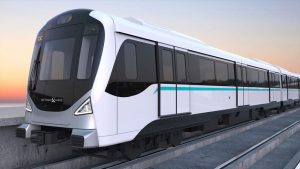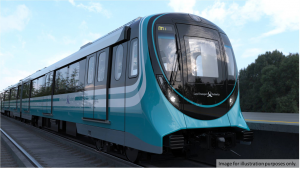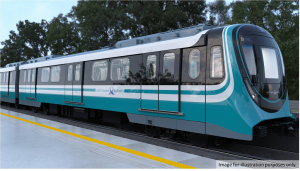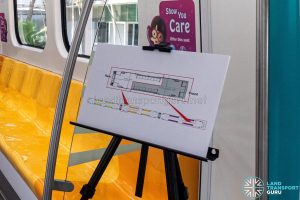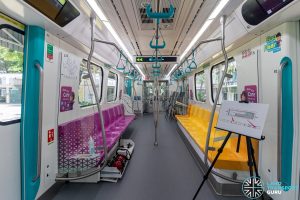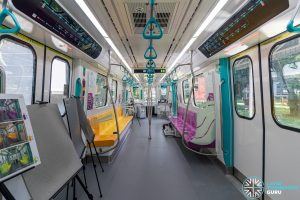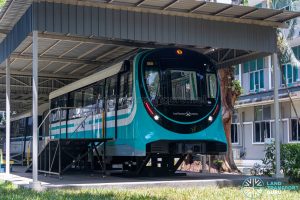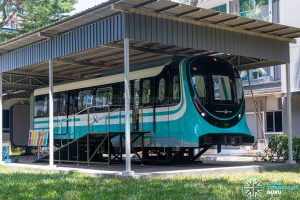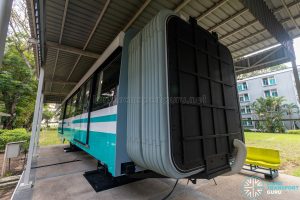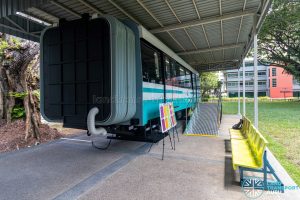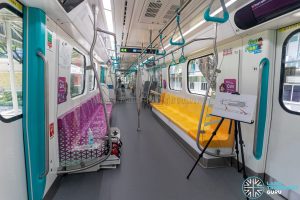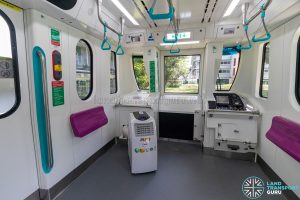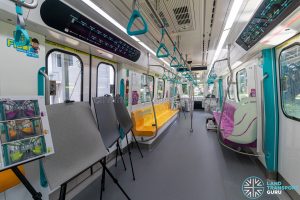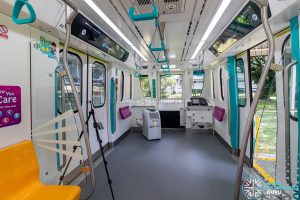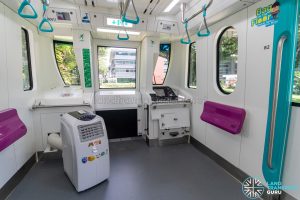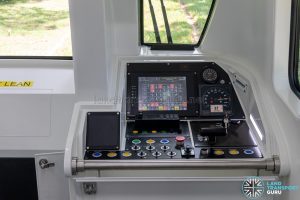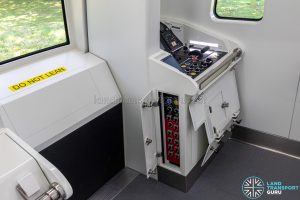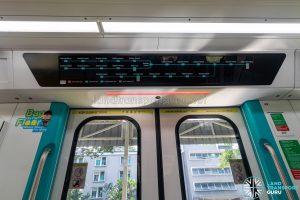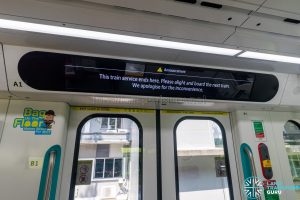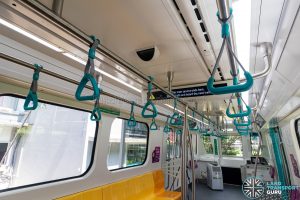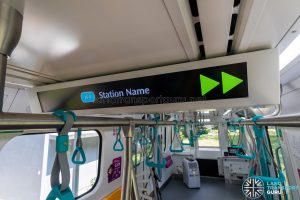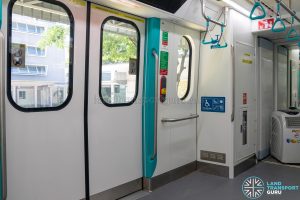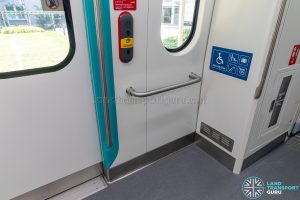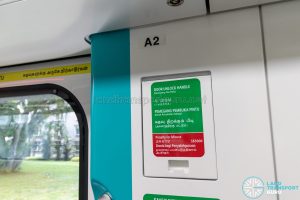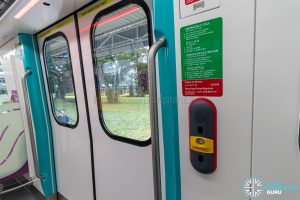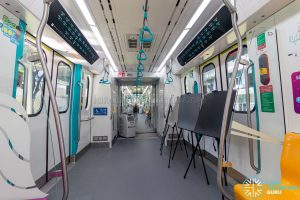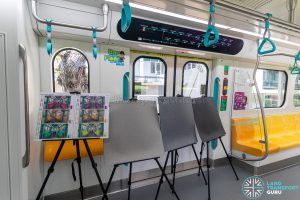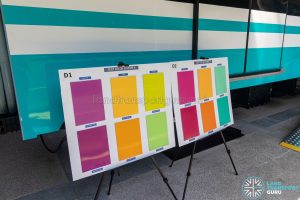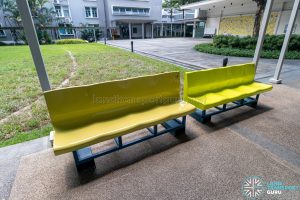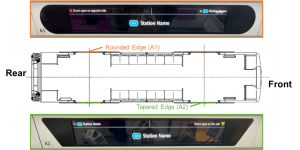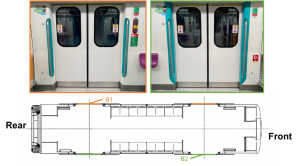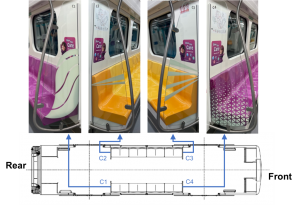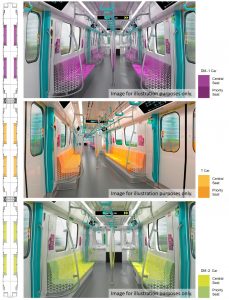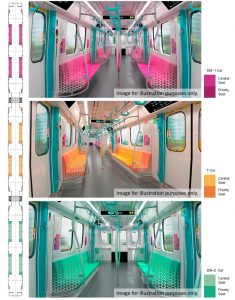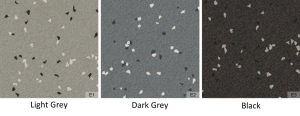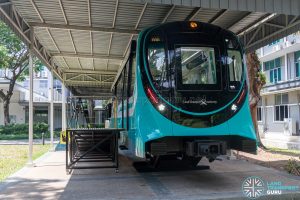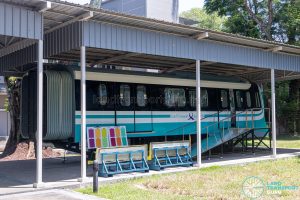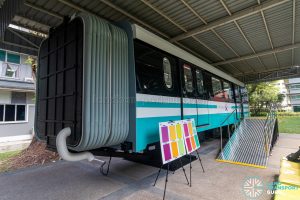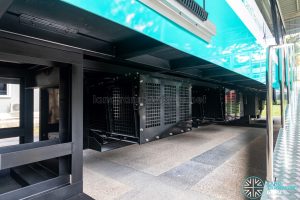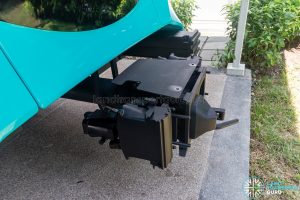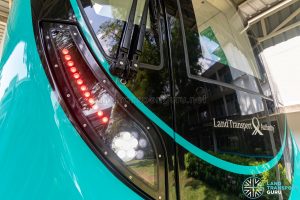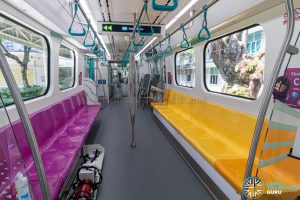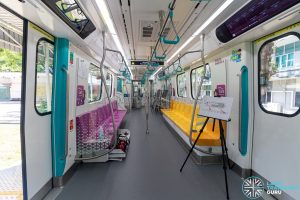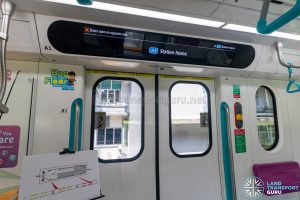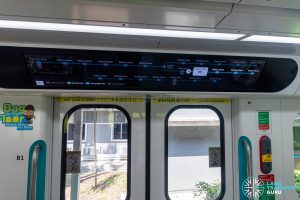In July 2021, a mock-up cabin of the Hyundai Rotem J151 Train was unveiled at the Land Transport Authority (LTA) Hampshire Office. 62 of these 3-car trains are being procured for the Jurong Region Line (JRL), with the first trains expected to arrive in mid-2024.
The mock-up cabin showcases various interior design options which are being evaluated prior to design confirmation. The LTA also invites members of the public to vote on their preferred designs & colour scheme via an online form, which is open until 20 August 2021.
Click here to choose your preferred designs for the Jurong Region Line trains.
Mock-up trains
Train manufacturers have previously supplied mock-up cabins to LTA after securing rolling stock procurement contracts. These mock-ups offer the chance for visitors to experience how the new trains would look and feel, and possibly also be used for design evaluation and the soliciting of feedback from both rail industry staff and members of the public.
Previous mock-up train cabins include the Bombardier MOVIA C951 (Downtown Line) and the Kawasaki-Sifang T251 (Thomson-East Coast Line).
The mock-up was first revealed in a Facebook post by Minister for Transport S. Iswaran on 18 July 2021, and the public feedback form was launched on the same day.
New renders of the JRL trains were released by LTA in tandem with the unveiling of the mock-up, replacing renders released in February 2020. The exterior design of the JRL mock-up train mirrors that of the updated renders. Some observable differences include:
- Redesigned front end, featuring a more rounded head design
- Updated livery; now primarily teal instead of white
- ATC mode indicator light uses a single cluster of LEDs
- Redesigned headlight/taillight assembly
- No ‘covers’ around the anti-climbers
- No observable floodlights (but featured in mock-up, discussed below)
The actual JRL trains are manufactured by Korean rolling stock manufacturer firm Hyundai Rotem Company (HRC), which was awarded the contract for the JRL trains in February 2020. 62 of these 3-car trains were procured at a cost of S$416.5 million. This is the first time that HRC is supplying new trains for the Singapore market.
In addition, these trains are also the first medium-capacity MRT trains for Singapore, and are smaller than those on existing heavy rail lines (i.e. NSL, EWL, NEL, CCL, DTL, TEL), given that the JRL’s alignment passes through built-up estates and navigates tighter turns.
Jurong Region Line Train mock-up
The mock-up train resides in a courtyard at LTA’s Hampshire Office, in place of the old TEL train mock-up (whereabouts unknown) and adjacent to the DTL train mockup.
The mock-up is a shortened version of an actual train car, featuring just two doors per side and a row of seats between doors. Half the mock-up is designed to resemble the Driving Motor car (i.e. end cars), while the other half mimics the trailer car (i.e. middle car). [View diagram here]
Exterior
The train sports a distinctive teal and black livery that matches the JRL’s assigned line colour. Teal is also used to indicate the JRL on the MRT System Map.
Easily identifiable features on the exterior of the train are common to other driverless trains in Singapore, including:
- Emergency detrainment door
- Headlights (white LED), taillights (red LED), and foglights (two sets, located above and below the front left windscreen)
- ATC mode indicator light (front orange lamp)
- Crew access switch (adjacent to front door) with side step
- Door open summary lamp (orange lamp along train car, illuminates when train doors are open)
According to S Iswaran, the hibiscus-shaped headlights are “inspired by our Garden City”, and attributed the rounded exterior design to be “inspired by the Fountain of Wealth at Suntec”.
Interior
One side of the mock-up is designed to resemble the Driving Motor car (i.e. end cars), while the other side mimics the trailer car (i.e. middle car). [View diagram here]
Since the JRL trains run fully automated, the front of the train accommodates a viewing area where passengers can enjoy the scenery through the front windscreen. Perch seats at the side walls accompany the viewing area, and the emergency detrainment door is also housed in the front wall.
The operator controls allow the train to be manually driven in the event of an emergency. During normal operation, this area is concealed behind a locked panel.
Features in the train cabin are what commuters expect to see on most trains in Singapore, such as:
- Dynamic Route Map Display above doorways, accompanied by ceiling LCD display
- Branched stanchion poles and three rows of overhead handgrips
- Reserved seats and wheelchair bay next to doorways
- Passenger communication unit and door unlock handle beside train doors
- Fire extinguishers in various locations
Passenger information is conveyed through Dynamic Route Map Displays (DRMD) above doorways, accompanied by LCD displays near the ceiling. Both display next and subsequent station information and other advisory messages.
Underneath the purple seats (mimicking the end cars), an equipment drawer contains a fire extinguisher, a first-aid kit, and room for other equipment. Space underneath the yellow seats (mimicking the middle car) appear to be occupied by other equipment.
At the rear of the mock-up, a wheelchair bay is fitted with a single grab pole. According to the indicative layout, areas next to the gangway will not feature seats.
Public Feedback Features
Various design options are mounted around the train car and labelled accordingly, corresponding to the available selections on the online form. These design options are:
- Dynamic Route Map Display (DRMD) – Round or tapered edges (2 options)
- Door Pillar Paint (2 options)
- Draughtscreen (4 options)
- Seat Color Palette (2 options)
- Floor Colour (3 options)
For the first three items (A, B, C), all available choices are installed on the mock-up. For the seat and floor colour options (D, E), the mock-up is only fitted with one option, and swatch cards are used to illustrate the other colour options.
While the JRL trains will initially be three cars long, the JRL infrastructure is built to support 4-car trains, it is likely that the 3-car J151 trains will be capable of being modified into 4-car trains in the future.
Click here to choose your preferred designs for the Jurong Region Line trains.
Gallery:
Public voting options released by LTA
Other mock-up photos
Virtual Tour Video
External Links & References:
- JRL Train Mock-Up Online Public Engagement – FormSG [Accessed 2 Aug 2021]

